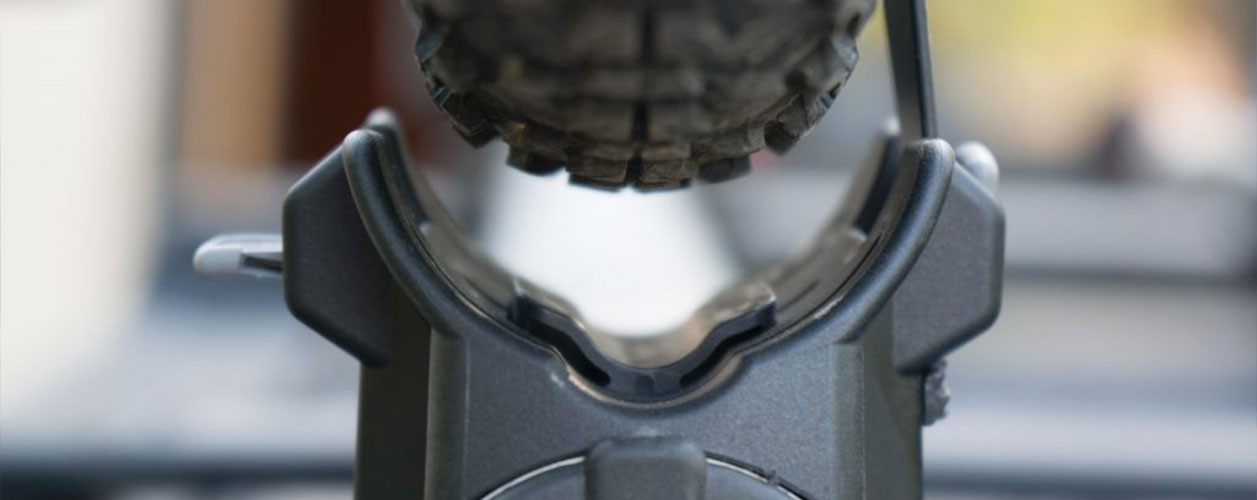ProView – Thule ThruRide 535
It’s about damn time. Back when it was just the mountain bikers who’d seen the light of through-axle hubs, we had to deal with those finicky converter things (you know the ones) to use a rooftop bike rack. Now that cross, and even road bikes, are moving toward larger diameter hubs there’s enough push for legit, through-axle-specific roof racks. Enter the Thule ThruRide 535 (MSRP: $219).
Initial Impressions
This thing came in the mail with a plastic bag full of a bunch of similar looking bolts and plastic thingies. I put it together in 5 or 10 minutes without any instructions, though, and it hasn’t fallen off the car yet.

Design
It looks like Thule has done more than just updating the popular Sprint 528, and redesigned the rack-car interface as well as the rack-bike interface. One thing that it doesn’t appear that Thule has changed from older models is the clamp tensioner adjustment knob. I haven’t had any issues at all with this one so far. It’s silky smooth. Some older Thule racks that have spent some time in the elements, or when they’re frozen, get sticky and don’t spin well. This isn’t unique to Thule and time will tell if it goes that way.
Fit
I’ve been able to test the ThruRide 535 with the three standard racks I’m familiar with: square Thule bars, round Yakima (gasp) bars, and the Thule aero bars. Thule also offers a proprietary T-Track mount. This baby fits ‘em all, while some fork mount rack options require specific base bars. The mounting hardware on this one has a curved side that works for aero and round base bars, and flips upside down with a flat side to fit square bars. Thule provides additional hardware for T-Track compatibility as well.
The car-rack interface design works well, although adjusting it for different base bars can be slightly awkward. The bottom swing arm that goes underneath the crossbar is fairly thick, and doesn’t fit well on some factory racks with low clearance between the top of the car roof and the bar. Installing it on Subaru factory racks was particularly awkward, but ultimately not a huge deal. The system sacrifices some ease of installation for a cross-platform compatibility.

Thule’s redesigned rack-bike interface is awesome. The traditional quick release fork mount roof rack has such tight tolerances in the camming ratio that it’s a very fine line between not being able to close (or reopen later) the cam lever and setting it too loosely. I’ve been in multiple cars as the driver watches through the rear view mirror with horror as a carbon road bike skitters down the highway at 75. The new Thule design has a firm, positive feel that securely locks the axle into place and leaves zero ambiguity about whether or not your bike is going to make it to the trailhead and back. It also allows you to only adjust it once; no more fiddling with the cam lever to rattle the lawyer lips off the rack.

Summary
I’m still not completely sold on fork mounted bike racks, when there are excellent options out there that let you keep both wheels on the bike. The fork mounted system has a lower profile for slightly improved aerodynamics and fuel economy, and without the front wheel the bike is slightly lighter for loading and unloading from the roof. On the other hand, you still need to store a wheel inside the car, and a hitch-mounted rack is significantly more aerodynamic. If you find yourself looking for a fork mounted rack, though, this is the best one I’ve come across. In spite of some slight installation nuances, loading and unloading the bike is a breeze and it won’t fall off the roof. And that’s what really matters.

Pros
- Secure rack-bike interface
- Easy to use
- Fits almost all crossbar designs
Cons
- Slightly awkward installation on some cars
- Locks not standard
Shop Thule on Outdoor Prolink. Not a member? Apply today!
By Ben Horan, adventurer extraordinaire and author of The Gentleman at Large




How is the axle tightened in the fork without a spacer maintaining correct spacing of the fork leg bottoms?
The axle is tightened in the fork by threading into the other fork leg. or with a quick release it is clamped together from both sides.